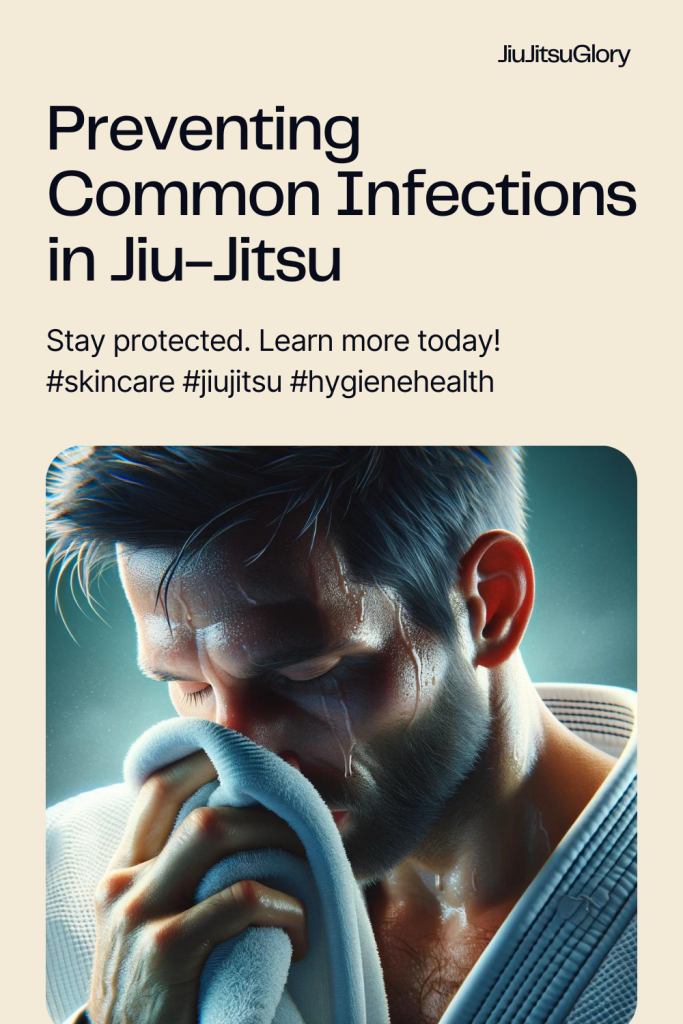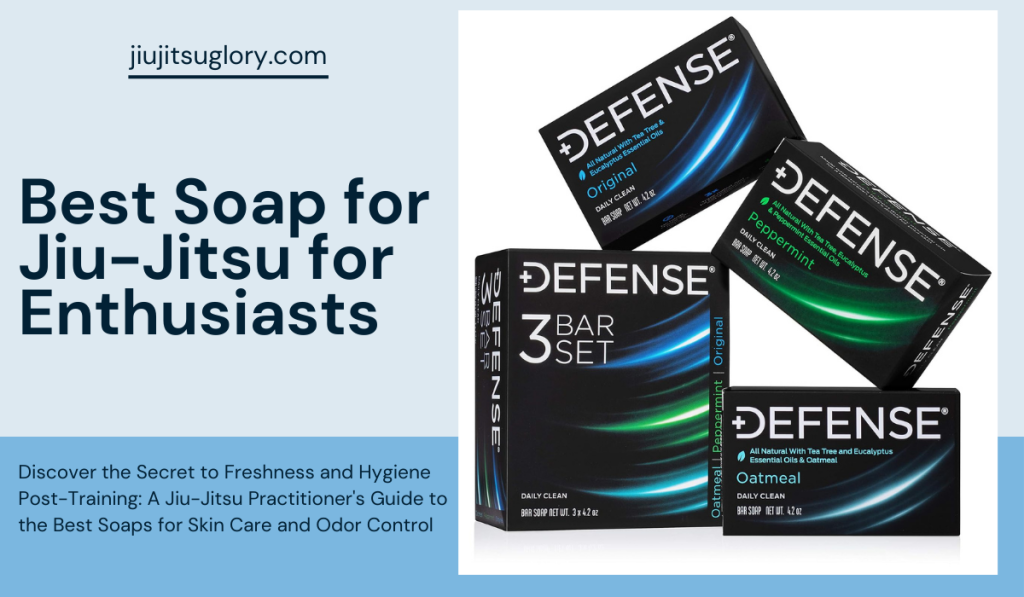Jiu-jitsu is a close-contact martial art that exposes practitioners to skin infections such as ringworm and staph. Therefore, observing proper hygiene practices when training in jiu-jitsu is essential for personal health and the safety of training partners.
This article highlights the most common skin infections in Jiu Jitsu and offers preventive measures to prevent them. Stay tuned!
Common Skin Infections in Jiu-Jitsu

Ringworm (Tinea)
Ringworm, or tinea, is a fungal infection that thrives in warm, moist environments. Red, itchy, circular rashes with clearer skin in the middle characterize it.
Often mistaken for other skin conditions, ringworm is highly contagious and spreads through direct skin-to-skin contact or by touching contaminated surfaces.
Commonly affected areas include the scalp, feet (athlete’s foot), and groin (jock itch).
In Jiu-Jitsu, the constant contact and shared equipment make it easy for ringworm to spread, emphasizing the need for vigilance and proper hygiene.
Staphylococcus (Staph) Infections
Staphylococcus, or staph, is a group of bacteria that can cause various infections, ranging from minor skin issues to severe, life-threatening conditions.
In Jiu Jitsu, cuts, abrasions, and close contact facilitate the transmission of staph. Symptoms include red, swollen, and painful areas on the skin, often with pus or other drainage.
Staph can lead to more severe infections like cellulitis or abscesses if not treated promptly.
Methicillin-resistant Staphylococcus aureus (MRSA) is a more dangerous form of MRSA, resistant to many antibiotics. Therefore, prevention and early detection are critical.

Other Notable Infections
Practitioners should know about other infections besides ringworm and staph, such as impetigo and herpes gladiatorum.
- Impetigo, caused by staph or streptococcus bacteria, presents as red sores that quickly rupture, ooze and form a yellow-brown crust.
- Herpes gladiatorum, caused by the herpes simplex virus, leads to clusters of painful blisters.
Both conditions are highly contagious and can spread rapidly in close-contact sports like Jiu Jitsu, underscoring the importance of proper hygiene and prompt treatment.
Preventing Common Skin Infections in Jiu-Jitsu

Maintain Personal Hygiene
Personal hygiene is the frontline defense against skin infections.
Showering before and after training helps remove bacteria, fungi, and sweat accumulating on the skin.
Use antibacterial jiu-jitsu soaps and body washes to clean the skin effectively.
Trimming and cleaning nails prevents bacteria from hiding under them and reduces the risk of scratching training partners, which can create entry points for infections.
Clean Your Equipment Thoroughly
It’s essential to wash training gear after each session.
This includes gis, rash guards, and other clothing, as bacteria and fungi can thrive in sweaty fabrics.
Disinfect equipment such as gloves, shin guards, and mats regularly. Using disinfectant sprays or wipes can help keep these items clean.
Make it a habit to check your gear for any signs of wear that might harbor bacteria and replace them as needed.
Keep the Gym Spotless
Gym cleanliness is a shared responsibility. Regular cleaning and disinfection of gym facilities, especially mats, is crucial.
Mats should be cleaned after each class with appropriate disinfectants.
Encourage all gym members to maintain a clean environment by wiping down equipment and common areas.
A clean gym prevents infections and creates a more pleasant training atmosphere.

Follow Health and Safety Protocols
Adhering to health and safety protocols is vital. Avoid training when sick or with open wounds, as these can be entry points for infections.
Cover any cuts or abrasions with proper bandages. This practice protects not only yourself but also your training partners.
Establish clear gym policies regarding health and hygiene to ensure everyone is on the same page and committed to maintaining a safe environment.
Practice Good Gym Etiquette
Good gym etiquette enhances hygiene efforts. Always wear shoes off the mats to prevent tracking in dirt and bacteria.
Encourage all members to follow hygiene rules and hold each other accountable. If you notice hygiene issues, address them respectfully and promptly.
Reporting and addressing these issues can prevent more significant problems and ensure a healthier training space for everyone.
Recognizing and Addressing Infections Early

A. Identifying Symptoms Early
Early identification of symptoms is crucial in preventing the spread of infections.
Learn to recognize signs of ringworm, staph, and other common skin infections. Look for unusual rashes, redness, swelling, pain, or pus.
If you or a training partner exhibit these symptoms, take immediate action. Promptly seeking medical advice can prevent minor issues from becoming severe.
B. Immediate Actions
If an infection is suspected, follow immediate steps to contain it. Stop training and avoid contact with others until you receive a proper diagnosis.
Clean and cover any affected areas to prevent the spreading of the infection.
Inform your gym and training partners about the situation so they can take preventive measures.
Quick action can significantly reduce the risk of a gym-wide outbreak.
C. Communication and Responsibility
Communication is vital in managing infections. If you suspect you have an infection, inform your training partners and coaches promptly.
Transparency helps others monitor their health and take necessary precautions.
Respect gym policies and adhere to recommended rest periods to ensure full recovery before returning to training.
Responsible behavior protects your health and the well-being of the entire gym community.
See also: 8 Essential Jiu-Jitsu Hygiene Practices for Beginners
Conclusion

Maintaining hygiene in Jiu Jitsu is paramount for preventing common skin infections.
By understanding the nature of these infections and implementing effective preventive measures, practitioners can protect themselves and their training partners.
Regular personal hygiene, diligent equipment cleaning, and adherence to gym cleanliness protocols form the foundation of a healthy training environment.
Early recognition and prompt action in case of infections are crucial in containing their spread. Embrace these practices to ensure a safe and enjoyable Jiu-Jitsu experience and foster a community that values health and well-being.
Related: The search for the perfect soap for Jiu-Jitsu enthusiasts is about maintaining cleanliness and embracing a lifestyle that prioritizes health, hygiene, and the art of martial arts. Read More!


